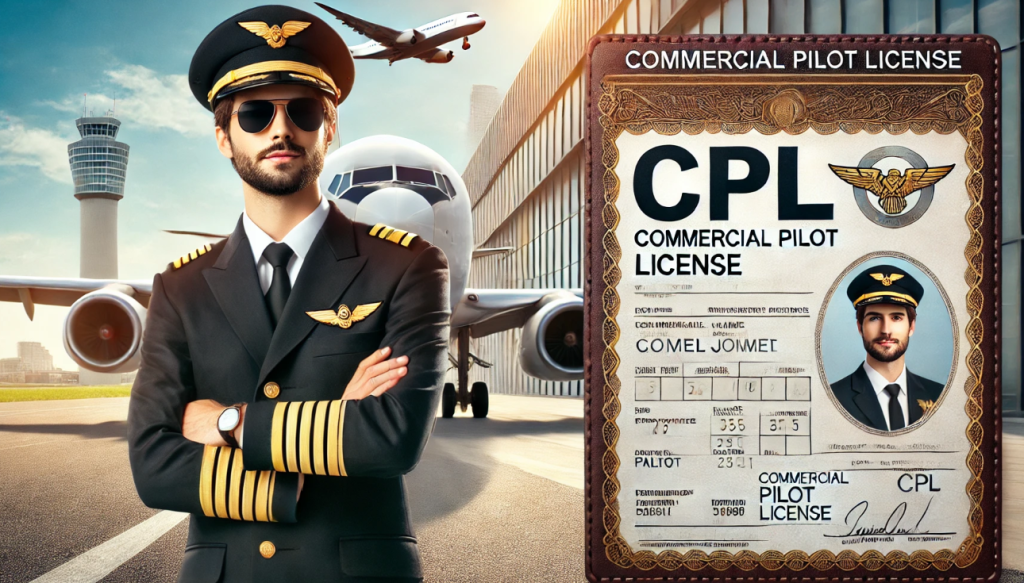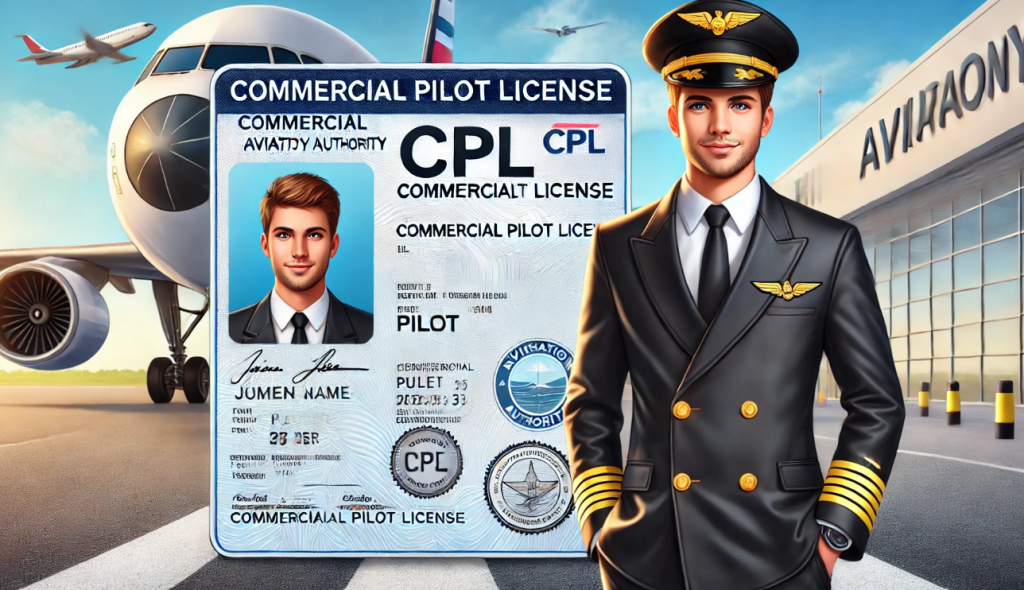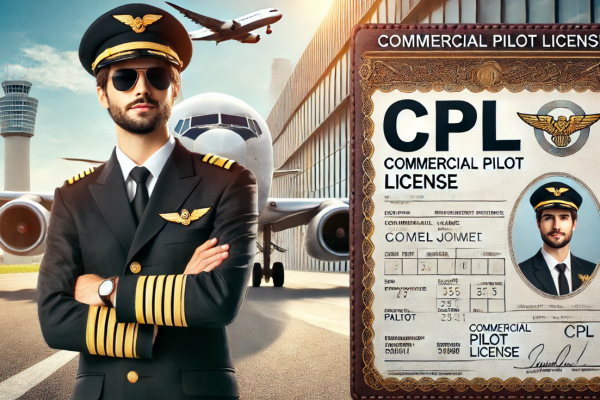
A CPL, or Commercial Pilot License, is a type of pilot license that qualifies you to act as a pilot of an aircraft and be financially compensated for your work. Here’s a breakdown of what a CPL allows you to do:
- Fly for Hire: Unlike a Private Pilot License (PPL) that restricts flying to recreational purposes, a CPL allows you to get paid for piloting an aircraft. This opens doors to various commercial flying opportunities.
- Increased Privileges: Compared to a PPL, a CPL grants you permission to carry additional passengers and cargo on commercial flights. You can also fly at night with certain limitations.
Requirements to Obtain a CPL:
- Minimum Age: The minimum age to obtain a CPL varies depending on the aviation authority issuing the license. It’s typically 18 years old.
- Flight Hours: You’ll need to log a minimum number of flight hours, usually higher than those required for a PPL. This may include specific amounts of solo flying, cross-country flying, and instrument training hours.
- Ground School and Exams: Passing written knowledge exams on various aviation subjects like navigation, meteorology, aircraft systems, and regulations is mandatory.
- Flight Test: Demonstrating your flying skills to a certified flight instructor (CFI) in a practical flight test is necessary.
CPL vs. Airline Transport Pilot (ATP):
The CPL is a stepping stone towards an Airline Transport Pilot (ATP) license, which is the highest level of commercial pilot license. An ATP allows you to pilot larger aircraft for commercial airlines.
Career Opportunities with a CPL:
- Commercial Flight Instructor: Train the next generation of pilots.
- Charter Pilot: Fly private individuals or businesses to their destinations.
- Cargo Pilot: Transport cargo on small to medium-sized aircraft.
- Aerial Photography or Survey Pilot: Capture images or data from the air.
- Corporate Pilot: Fly company executives or personnel in private aircraft.

Obtaining a CPL can be a rewarding journey, opening doors to exciting career opportunities in aviation. If you’re passionate about flying and have a dream of piloting commercially, a CPL is a crucial first step.
A Commercial Pilot License (CPL) is a certification that allows the holder to act as a pilot of an aircraft and be compensated for their work. This license is essential for anyone looking to pursue a professional career in aviation, whether as an airline pilot, charter pilot, flight instructor, or in other roles where piloting an aircraft for hire is required.
Key Features and Privileges of a CPL
- Compensation for Flying:
- Holders of a CPL can be paid for their services as pilots, unlike those with a Private Pilot License (PPL).
- Expanded Privileges:
- CPL holders can act as pilot-in-command (PIC) of an aircraft carrying passengers or cargo for hire.
- They can also act as a co-pilot in commercial air transport operations.
- Flight Instructor:
- CPL holders can obtain additional certifications to become flight instructors, teaching others how to fly.
- Variety of Aircraft:
- The CPL allows you to fly a broader range of aircraft, including larger and more complex planes, subject to additional ratings.
Requirements to Obtain a CPL
- Age:
- You must be at least 18 years old.
- Medical Certification:
- Obtain a second-class medical certificate from an Aviation Medical Examiner (AME).
- Educational Background:
- A high school diploma or equivalent is generally required.
- Strong proficiency in mathematics, physics, and English is beneficial.
- Flight Training:
- Accumulate a specified number of flight hours, which can vary by country. In the United States, for example, the FAA requires:
- At least 250 total flight hours.
- 100 hours as pilot-in-command.
- 50 hours of cross-country flight time.
- 10 hours of instrument training.
- 10 hours of flight training in a complex aircraft.
- Accumulate a specified number of flight hours, which can vary by country. In the United States, for example, the FAA requires:
- Ground School:
- Complete ground school training covering advanced topics in aerodynamics, navigation, meteorology, aircraft systems, flight planning, and regulations.
- Written Exam:
- Pass the FAA (or relevant authority’s) written knowledge test for the CPL.
- Flight Test (Checkride):
- Successfully complete a practical flight test (checkride) with an examiner, demonstrating proficiency in advanced maneuvers, navigation, and emergency procedures.
Steps to Obtain a CPL
- Begin with a Private Pilot License (PPL):
- Obtain a PPL, which is a prerequisite for a CPL.
- Accumulate Flight Hours:
- Gain the necessary flight experience and log the required hours.
- Complete Ground School:
- Enroll in and complete a ground school program for the CPL.
- Pass the Written Exam:
- Study for and pass the CPL written knowledge test.
- Advanced Flight Training:
- Undertake advanced flight training with a certified flight instructor.
- Pass the Checkride:
- Schedule and pass the practical flight test with a designated pilot examiner.
Career Opportunities with a CPL
- Airline Pilot:
- Serve as a co-pilot or captain for commercial airlines.
- Charter Pilot:
- Fly private charters, corporate flights, or air taxis.
- Flight Instructor:
- Teach aspiring pilots and provide flight training.
- Cargo Pilot:
- Transport goods and cargo for logistics companies.
- Agricultural Pilot:
- Perform aerial application of agricultural products (crop dusting).
- Aerial Survey Pilot:
- Conduct aerial surveys and photography for mapping and research.
